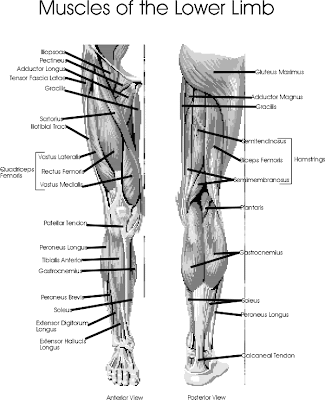Reduction in the quantity of bone or atrophy of skeletal tissue; an age-related disorder characterized by decreased bone mass and increased susceptibility to fractures.
Osteoporosis affects 20 million Americans, about 80% of them women, and costs U.S. society as much as $3.8 billion annually. About 1.3 million fractures attributable to osteoporosis occur each year in people age 45 and older, and this condition is responsible for 50% of fractures occurring in women over age 50. Although all bones are affected, compression fractures of the vertebrae and traumatic fractures of the wrist and femoral neck are most common. Gradual asymptomatic vertebral compression may be detectable only on radiographic examination. Loss of body height and development of kyphosis may be the only signs of vertebral collapse. After hip fracture, most elderly patients fail to recover normal activity, and mortality within 1 year approaches 20%. Fractures in the elderly often lead to loss of mobility and independence, social alienation, fear of further falls and fractures, and depression. Osteoporosis occurs when bone resorption outpaces bone formation. Mechanisms underlying osteoporosis are complex and probably diverse. Bone constantly undergoes cycles of resorption and formation (remodeling) to maintain the concentration of calcium and phosphate in the extracellular fluid. When serum calcium concentration drops, parathyroid hormone secretion increases, and this hormone stimulates bone resorption by osteoclasts to restore serum calcium levels to normal. Bone mass declines with age and is influenced by sex, race, menopause, and body weight-for-height. Dietary intake of calcium and vitamin D as well as intestinal and renal function affect calcium and phosphate homeostasis. The risk of osteoporosis is highest in postmenopausal women. Asian or white race, underweight, dietary calcium deficiency, sedentary lifestyle, alcohol use, and cigarette smoking appear to be independent risk factors. The decline of vitamin D3 level with aging results in calcium malabsorption, which, in turn, stimulates bone resorption. Estrogen deficiency exacerbates this problem by increasing the sensitivity of bone to resorbing agents. Women who become amenorrheic because of rigorous athletic exercise and dietary restriction or eating disorders are at risk of osteoporosis. The formation and resorption of bone are also influenced by external physical factors such as body weight and exercise. Immobilization and prolonged bed rest produce rapid bone loss, while exercise involving weight-bearing has been shown both to reduce bone loss and to increase bone mass. Osteoporosis is common in young adults with cystic fibrosis, particularly those treated with long-term corticosteroid therapy. The diagnosis of primary osteoporosis is established by documentation of reduced bone density after exclusion of known causes of excessive bone loss. Radiographs are insensitive indicators of bone loss, since bone density must be decreased by at least 20–30% before the reduction can be appreciated. Standard diagnostic procedures are determination of bone mineral density at the ultradistal radius and midshaft radius by single-photon absorptiometry, and at the hip and lumbar spine by dual-energy x-ray absorptiometry (DEXA). A quantitative ultrasound procedure recently approved by the FDA is comparable to bone density measurements by DEXA in predicting fractures due to osteoporosis. The goal of therapy in osteoporosis is prevention of fractures in susceptible patients. The appropriate timing and proper use of agents such as calcium, vitamin D, estrogen, bisphosphonates, calcitonin, and raloxifene and the role of exercise have generated major research efforts and considerable controversy. Intake of adequate amounts of calcium and vitamin D, and continuing moderate weight-bearing exercise, are basic preventive measures for persons of all ages. Administration of estrogen at and after menopause does not simply halt the loss of bone, but actually increases bone mass. Hormone replacement with estrogen remains the most effective prevention and treatment for postmenopausal osteoporosis. It is believed to be most appropriate to start estrogen at theearliest sign of the menopause, since bone loss probably begins before the cessation of menses. Estrogen therapy must be continued through later life to maintain optimal bone density. There is no convincing evidence that initiating estrogen therapy in elderly women will prevent osteoporosis. The benefits of estrogen therapy must be weighed against the increased risk of endometrial hyperplasia and endometrial carcinoma (which can be offset by concomitant administration of progestogen) and possibly of carcinoma of the breast. The selective estrogen receptor modulator raloxifene has been approved for prevention of osteoporosis. It does not cause endometrial hyperplasia but is less effective than estrogen in conserving bone mass. The hormone calcitonin, administered by injection or nasal spray, inhibits bone resorption and has other effects on mineral metabolism. Bisphosphonates such as alendronate and etidronate, which bind to bone crystals, rendering them resistant to enzymatic hydrolysis and inhibiting the action of osteoclasts, have been shown to increase bone mineral density. Strategies to prevent falls are important in elderly patients.
Drugs for Osteoporosis: alendronate, calcitonin, calcium citrate, calcium phosphate (diabasic), estradiol and norgestimate, estrogens (esterified), estrone, estropipate, ethinyl estradiol, raloxifene and risedronate (These are some of the drugs used for prevention of osteoporosis and I highly recommend the readers to use these drugs under the qaulified doctors instructions)



Comments
Post a Comment